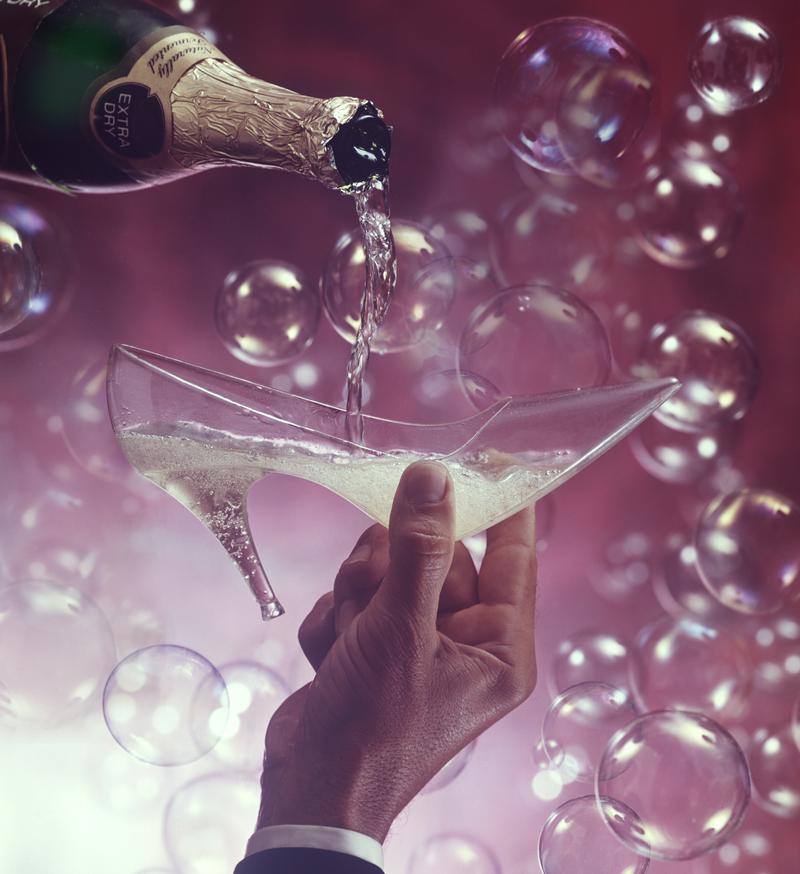A Brief History of Champagne: Where Did Champagne Come From And How?
By | December 29, 2020

Whether it be a wedding, graduation, or New Years Eve, the go to celebration drink for those who like to imbibe is of course, the one and only, Champagne. Ubiquitous in its popularity for parties, Champagne holds a special place in the heart of many who view it as the end all be all of festivity. But what if I told you that your favorite fizzy was made by mistake, and in fact this most special of wines was originally viewed as a major setback to those who created it?
More importantly, why did this beloved beverage first bubble up in Champagne, France out of all places? Well, that’s because Champagne is farther North than the other famous wine producing regions of Bordeaux and Burgundy, and thus faces cooler temperatures and earlier frosts. Because of this, the grapes grow more acidic and the fermentation process is more prolonged as compared to more traditional wines. However, this resulting carbonation led to the bottles bursting and the cork shooting off in dramatic if not dangerous fashion.
Did You Know: Every year over two dozen people are killed by Champagne corks? That officially makes popping open a bottle of bubbly more dangerous than skydiving! Remember to never point the cork toward yourself or others when opening the bottle, or else you risk Cava catastrophe.

As you can imagine, the winemakers were not so excited to have this “devil’s wine”, as they called it initially, and viewed the iconic bubbles as a major flaw. Winemakers struggled to correct this, and may have well succeeded if it were not for long time frenemy, England, who took a special liking to the sparking wine. As it was considered a novelty in the courts of France, the Marquis de St. Evremond brought the drink to the English nobility in the 1600’s and it soon became the talk of London. Demand for Champagne boomed in London and the winemakers scurried to supply in the 1660’s.
Meanwhile in France, a Catholic monk named Dom Perignon divided his time between religion and the problem of exploding wine bottles. He set out to better understand the process of fermentation and decided to methodically prune the vines while exclusively using pinot noir grapes which he found led to less explosions. Perignon’s perfection of the fermentation process alongside English inventions like the cork stopper made the devil’s wine much safer to store and therefore easier to ship. We can also thank the one and only Louis Pasteur (most famous for making milk safe to drink), for making great strides in the world of fermentation as he discovered the link to the build up of yeast in liquids.
In the early 1800's, another innovation came with Madame Clicquot's technique of riddling, where bottles were places upside down at a tilt and regularly turned so that the sediment would collect at the neck. When they were sure all of the yeast had settled onto the cork, it was removed and the resulting Champagne was clearer and more tasty than ever before. You can still buy Clicquot and Dom Perignon Champagne to this day, but it's going to cost a pretty penny as even the "lower end" bottles of Dom Perignon sell for over a hundred dollars.

At last, winemakers stopped looking at the secondary fermentation process as something to be loathed and now embraced the fizzy beverage with open arms and heavy pockets. Throughout the 1700’s, Champagne grew in popularity thanks to the Duke of Orleans who used it to fuel his dayslong ragers. Finally, in the 19th century Champagne would be beloved by people outside of the noble class, as further technological advances made it more available to the general public.
While you may have heard the saying, “if it’s not from Champagne it’s not Champagne”, the fact is most sparkling wine in modern day is manufactured under similar standards. The real issue regarding quality, as always, lies in the vineyard, grapes, and climate. That being said, the saying still stands as the people of France have long protected the name Champagne from those who seek to make money off the prestigious drink. This was apparently so important to the people of France that the recognition was even included in the 1919 Treaty of Versailles, you know, that thing that ended World War I and according to some historians even set the stage for World War II because of it’s hardline economic sanctions against Germany? Yeah, it was that important to their culture and economy.

Technically speaking the “only from Champagne” saying is correct, as in 1936 the wine called “Champagne” was legally defined as a bubbly wine which came solely from the region of Champagne, France. Every other bubbly sugary wine is considered “sparkling wine” regardless of its quality. However, one country’s law is another country’s shrug and thus places like California still boasts it’s prestige sparkling wine as “California Champagne '' regardless of this technicality.
All things Champagne really took off from the 19th century, with the beverage not only taking over as the favorite drink but ascending into a full on icon of success. Since the 1800’s the United States have made it a habit to throw full bottles of Champagne against their debuting ships to wish it good luck. If you’ve paid attention to sports, you likewise may have noticed the Brut being poured on your favorite athletes after a major win. Ever since the mid 20th Century, thanks in large part to the Milwaukee Braves who won the World Series in 1957, coaches have poured Champagne on their winning teams to commemorate both joy and exceptionalism.
As the end of 2020 nears, people all across the world will opt to ring in the New Year with a tall glass of bubbly, all thanks to some especially cold soil a couple of hundred years ago in a northern French province.

